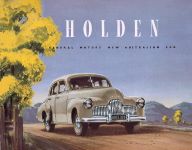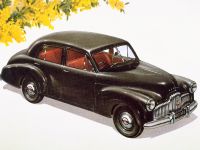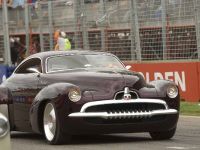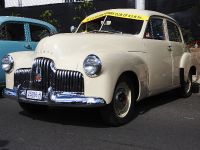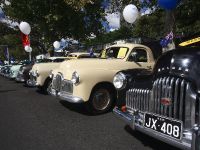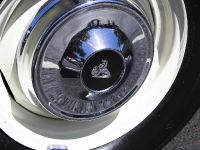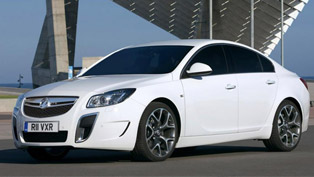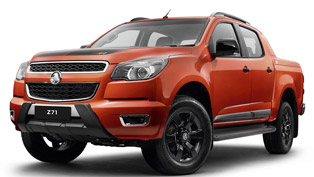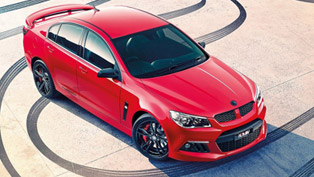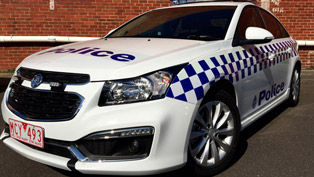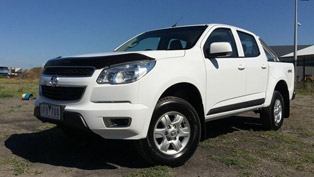Stars Of The Sixties - 1963-1969 Holden Rolls Out Landmark Models As Confidence Grows
This year, Holden will commemorate the 60th anniversary of Australia's own car, the 48-215.
In the countdown to this significant anniversary, Holden will revisit the iconic models that cemented its place in Australian history.
Holden's confidence continued to grow in the 1960s as it introduced new models and broke new sales records. Holden expanded beyond the local market, exporting cars in CKD form to more than 55 markets in 1966. More and more mechanical features were made available, including an imported V8 engine on HK.
Holden had its first taste of victory at Bathurst in the 1960s and introduced nameplates, such as Kingswood, Torana and Monaro, which are now amongst the most recognised in Australian automotive history.
Holden EH – 1963-1965
Originally heralded as the most dramatic new Holden model since the 48-215, the EH stakes a big claim on the title of the nation's all-time most popular car. During just 18 months of manufacture, the EH sold a record 256,959 units to become the fastest-selling Australian car ever.
Based on the EJ – the first completely new 1960s Holden model – the EH boasted a completely new, much more powerful engine and clever styling changes. Despite these new features, the basic EH was priced at the same level as its predecessor. A wave of public interest prior to the release of this value-for-money model created unprecedented demand and marked a resurgence of the locally-built product amid the rising popularity of cheaper Japanese imports.
The more fuel-efficient new powerplant, dubbed the "red engine" (after the colour of its painted block) was available in two versions – a first for GMH. It offered 33 per cent more power than the previous "grey engine" in standard 149 configuration and 53 per cent more power in bigger 179 form. This increased horsepower restored Holden's performance relativity to the superior level benchmarked by the Holden 48-215 in 1948. The bigger 179 engine came standard in the top-end Premier and limited edition S4 sports models while a third engine, an economy low compression version of the 149, was also available.
The engines were designed to be smoother, longer lasting and more economical. They also proved ideal for towing, an increasingly popular pastime in the 1960s. Renowned for reliability and long lifespan, a "red engine" would often cover more than 130,000km before any major servicing was required. Competitors' engines at the same time commonly needed this attention at 80,000km.
The EH range offered 24 variants across six models: the Standard, Special, Premier, Coupe utility and panel van.
For the first time, Holden buyers could also experience the luxury appointments of the Premier range in a station wagon. The S4 sports sedan model, produced in small numbers (120) for use in motor sport, was the only version to combine the powerful 179 engine with three-speed manual transmission.
The EH owed much of its success to its universal appeal. It was inexpensive, practical, economical, relatively quick and ideal for modification. Its familiar good-looks and high status ensured its enduring popularity.
EH facts:
Base price at introduction: $2,102/?1,051
Total number built: 256,959
Models: Standard sedan, Special sedan, Premier sedan, S4 Special sedan, Standard station wagon, Special station wagon, Premier station wagon, panel van and utility
Engine: 2.45 litre OHV six-cylinder "149" (a low compression version of this engine was also available) and 2.95 litre OHV six-cylinder "179"
Dimensions (sedan): Length: 4511mm, Wheelbase: 2667mm, Width: 1727mm.
Power output: "149" – 75kW/100bhp @ 4400rpm
"179" – 86kW/115bhp @4400rpm
"149" low compression – 72kW/95bhp @ 4400rpm
Transmission: Three-speed manual, synchromesh on 2nd and 3rd
Three-speed automatic
Also in 1963-65:
Holden's new ?11 million engine plant and foundry opened at Fishermans Bend in Melbourne, Victoria.
Holden produces 166, 274 cars during 1963. Of these, 10,798 were shipped to 55 overseas markets.
Holden's Design and Engineering group moved to a new Technical Centre at Fishermans Bend. The state-of-the-art facility catered for 900 designers, engineers, draftsmen, modellers and technicians.
Holden HK – 1968-69
The all-new Holden HK was the most ambitious series to date, bringing a large array of additional models and new mechanical features, including the iconic Monaro nameplate and an imported V8 engine. The HK also introduced the now-famous Kingswood name for the volume-selling model.
The HK was bigger, lower, heavier and more rounded in appearance. The two major model additions were the Brougham luxury variant and the Monaro sports coupe. The V8 engine was available on all models and proved a massive success.
The base model HK was called Belmont and the model formerly called Special became the much-loved Kingswood.
The upmarket Premier was retained and, in July 1968, an extended version of the HK sedan, the Brougham, was released. It was more than 20cm longer than the Premier and featured the Chrevrolet "307" V8 engine, automatic transmission, power steering and the most plush Holden interior yet.
Monaro arrived in July 1968 and won a legion of fans with its pillarless coupe styling and performance credentials. Based on the HK sedan, it was the first local vehicle of its type. Three models were offered, including the potent "Bathurst-bred" GTS 327, fitted with a US-built, 5.3-litre V8 engine.
With the HK, Holden offered a larger choice of models, engines, transmissions and options than had previously been seen in a mass-produced Australian car. Safety features fitted to all models included an energy-absorbing steering column (another local first) and a dual circuit braking system.
HK facts:
Base price at introduction: (incl sales tax) $2,215 ( Belmont six-cylinder sedan), $3,021 (Premier six-cylinder wagon), $2,575 (base Monaro six-cylinder), $3,790 (Monaro V8 GTS 327)
Total number built: 199,039
Models: Belmont sedan, Kingswood sedan, Premier sedan, Brougham sedan, Monaro Coupe, Monaro GTS coupe, Monaro GTS 327 coupe, Belmont station wagon, Kingswood station wagon, Premier station wagon, Belmont panel van, Belmont utility and Kingswood utility.
Engine: 2.65 litre six-cylinder "161", 3.05 litre six-cylinder "186", 3.05-litre six-cylinder "186S", 5.0-litre V8 "307" and 5.3-litre V8 "327"
Dimensions (basic sedan): Length: 4686mm, Wheelbase: 2819mm, Width: 1816mm.
Transmission: Three-speed manual, four-speed manual and two-speed Powerglide automatic transmission.
Also in 1968-69:
Torana bodies were made in Australia for the first time and work progressed on a V8 engine plant at Fishermans Bend.
Bruce McPhee and Barry Mulholland, driving a Monaro GTS 327 V8, won the Hardie-Ferodo 500, giving Holden its first victory in the annual Bathurst production car endurance race.
A new Safety Design Centre opened at Holden's Proving Ground in Lang Lang, Victoria, with an impact sled and a 10-tonne concrete barrier for crash testing.
